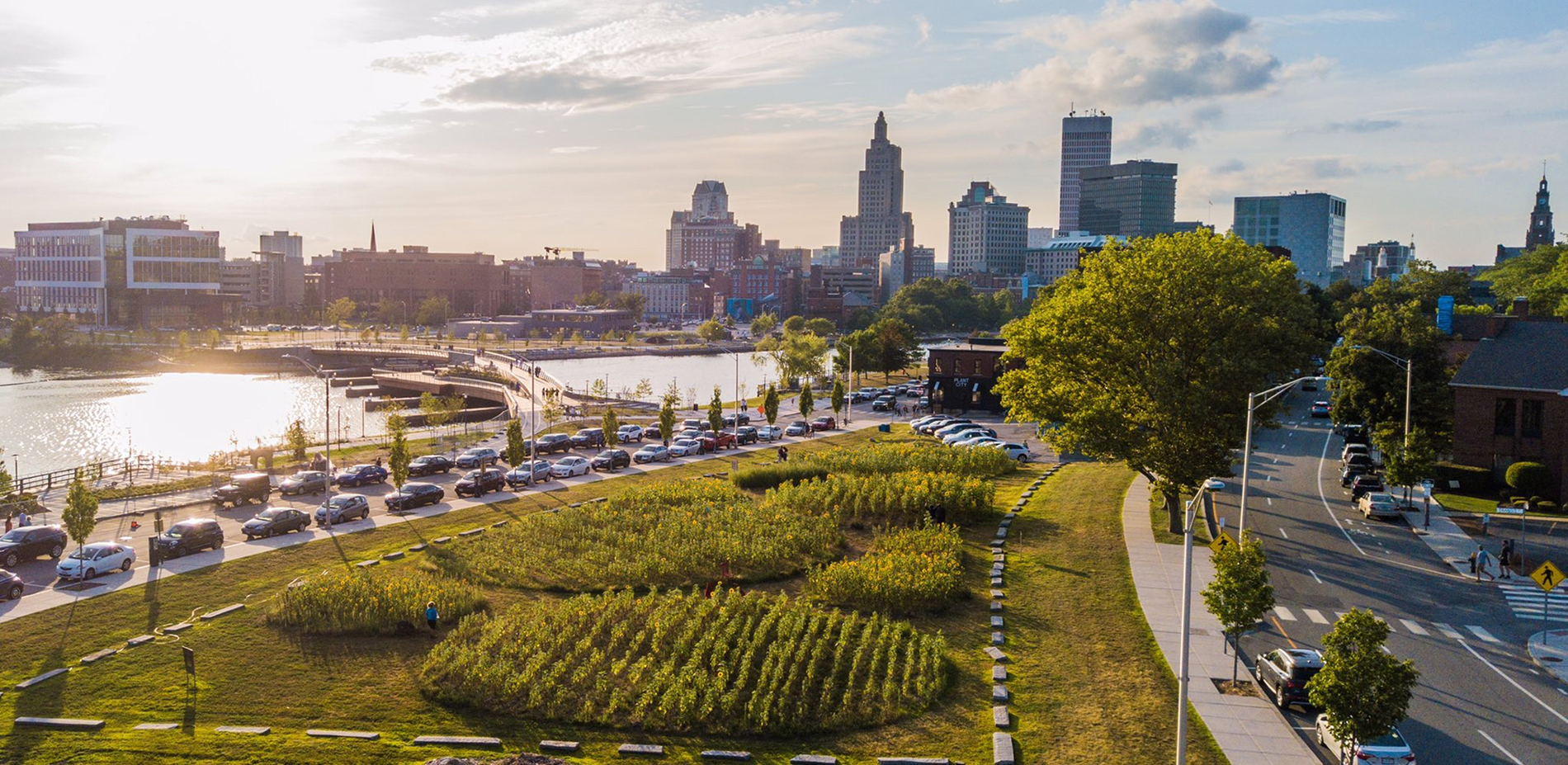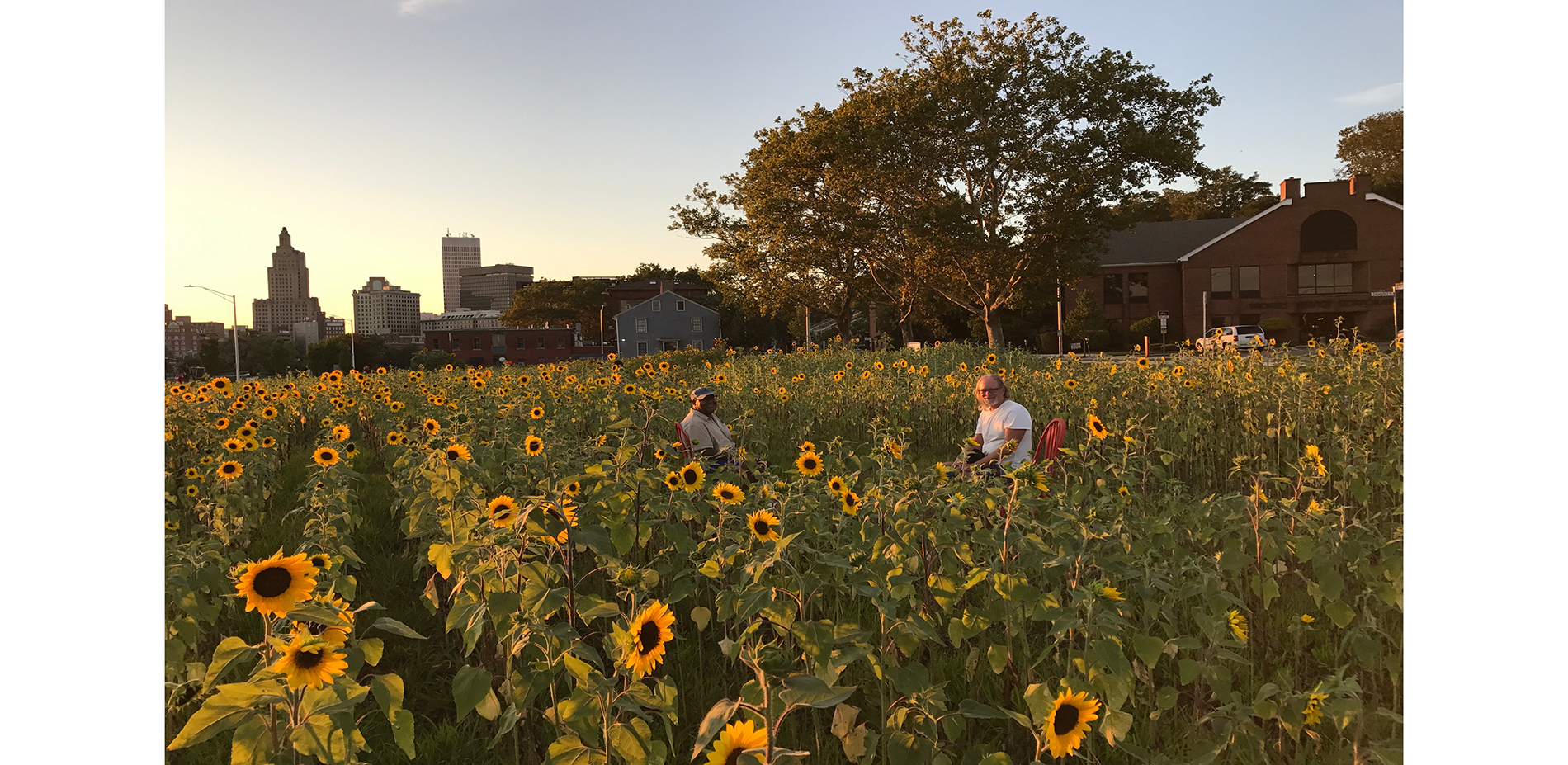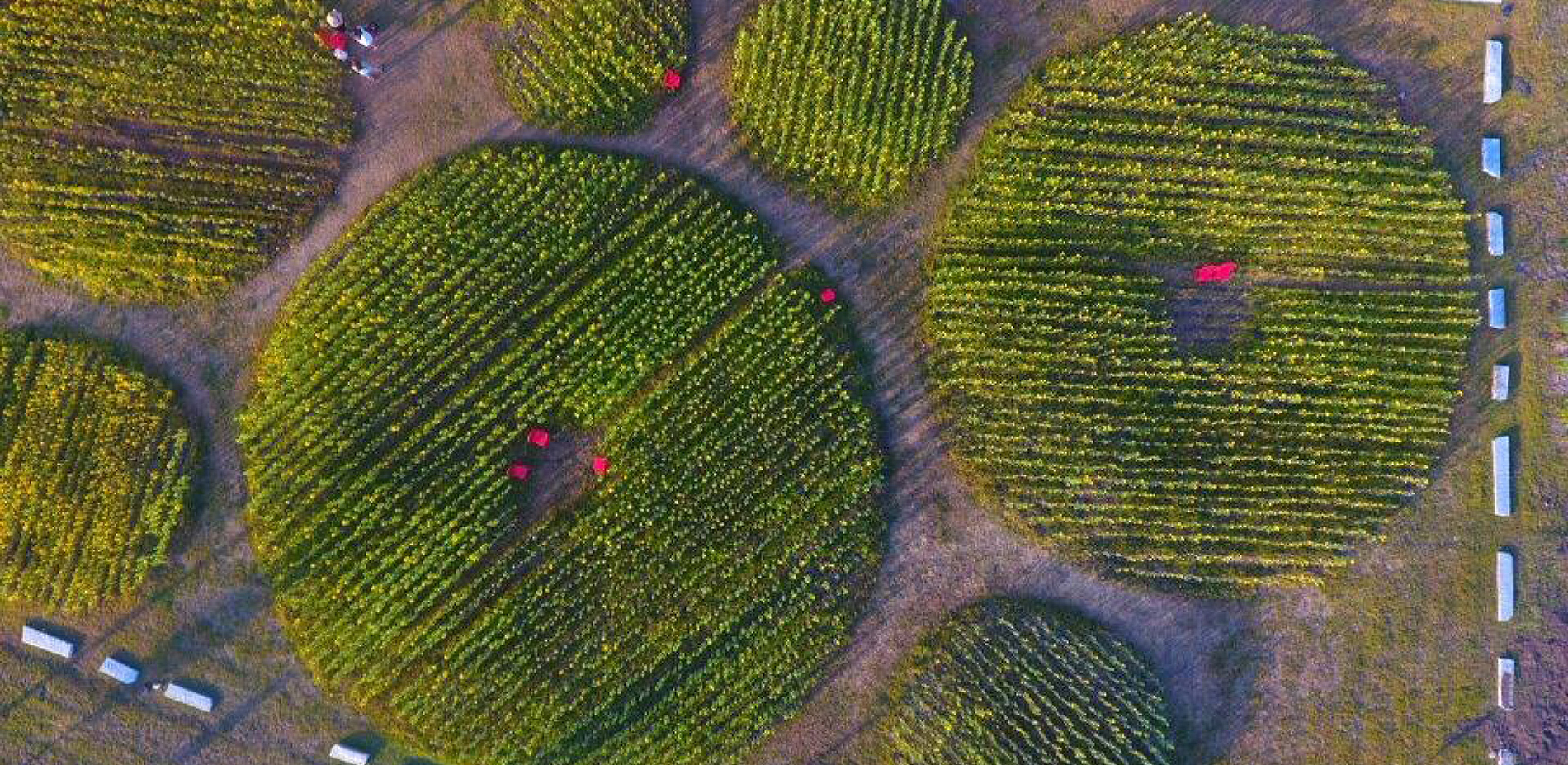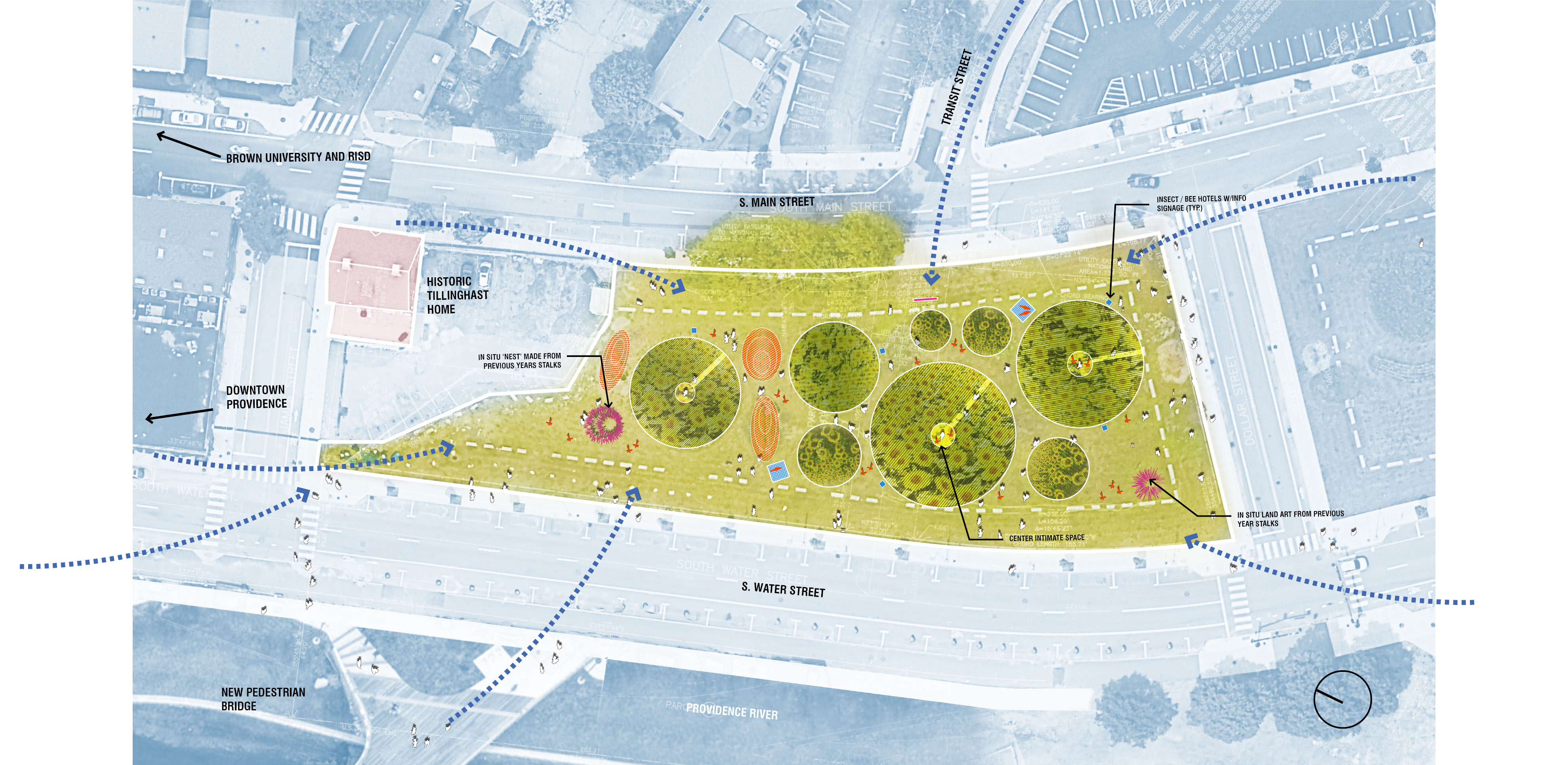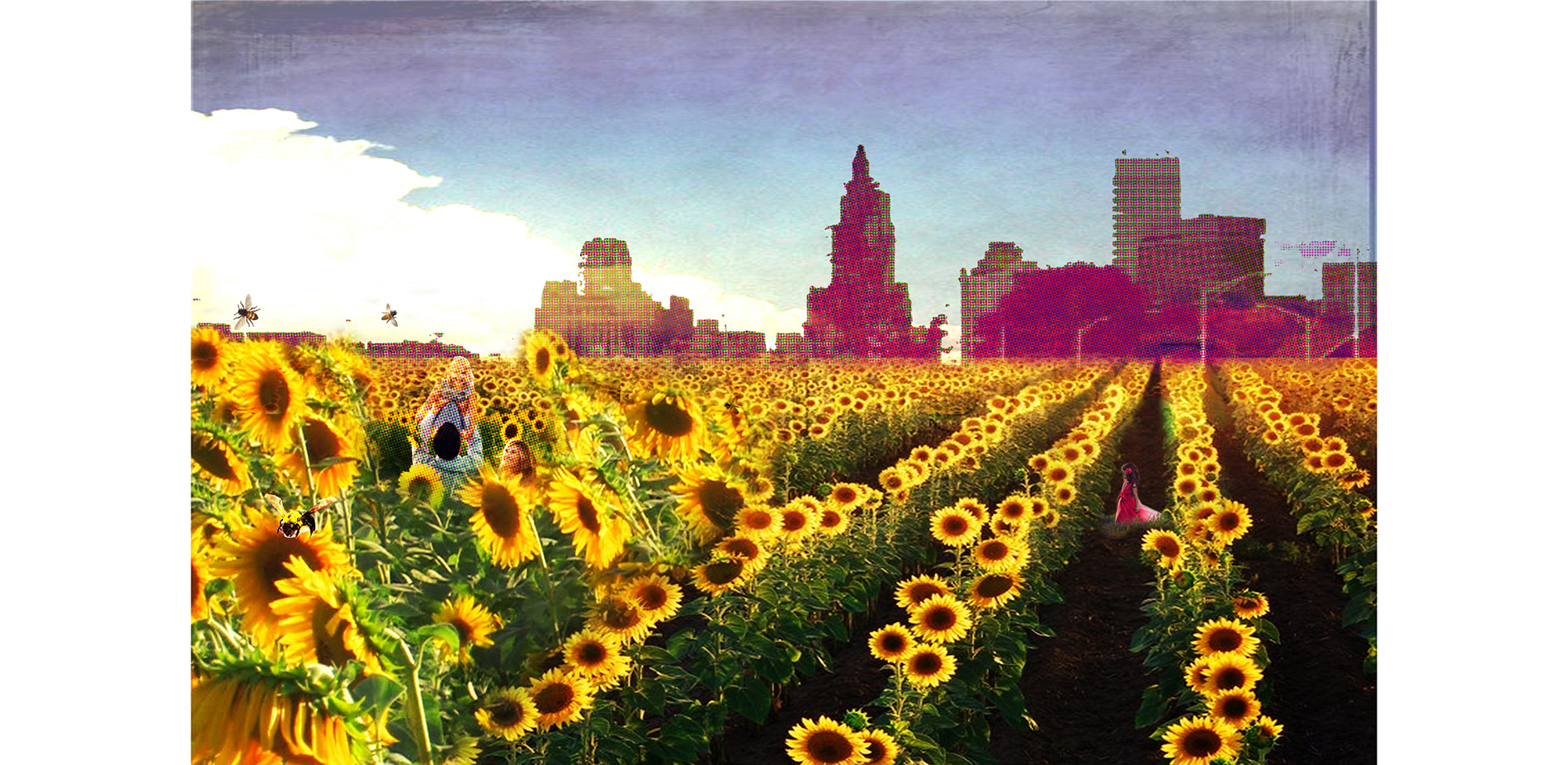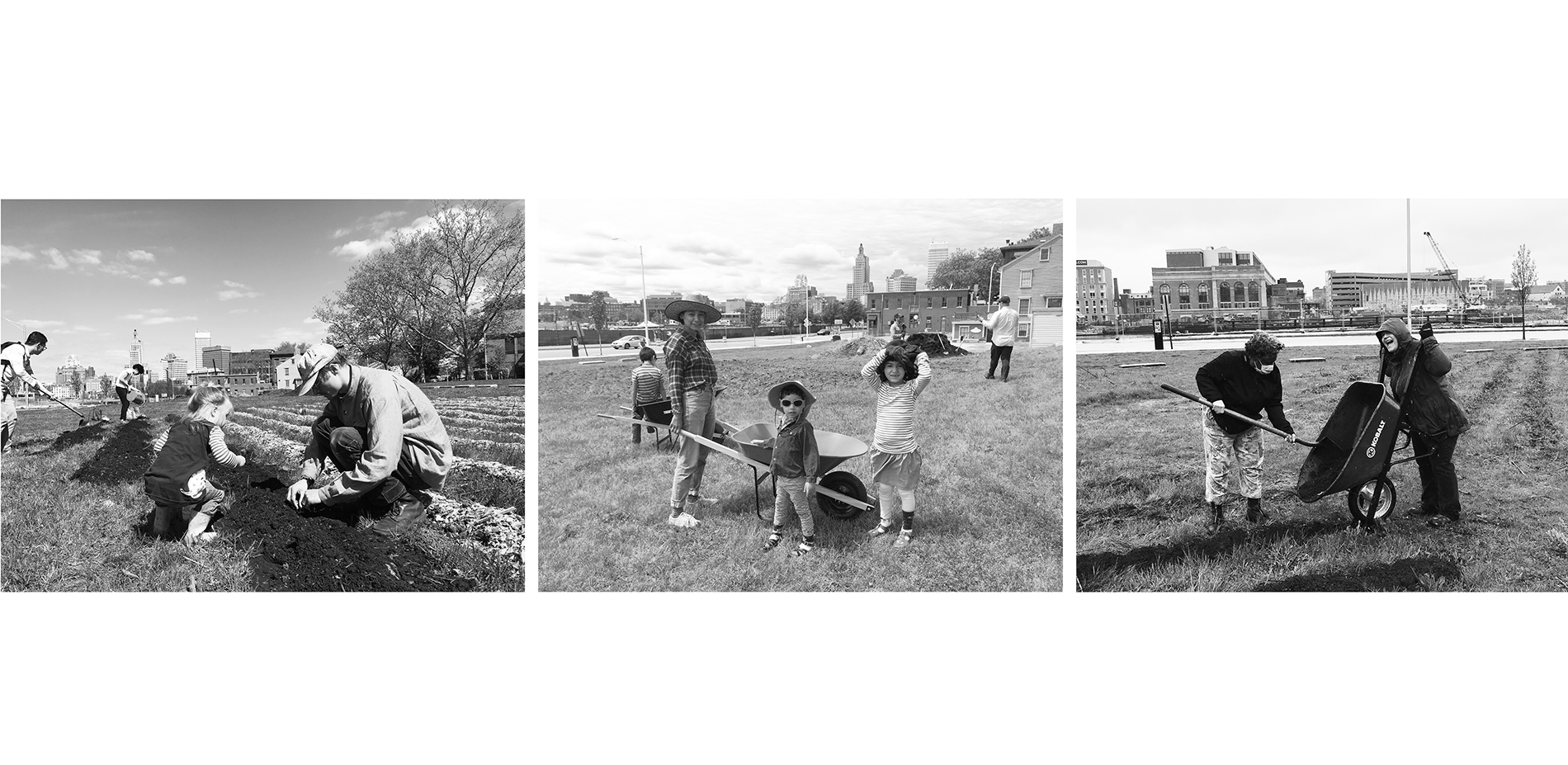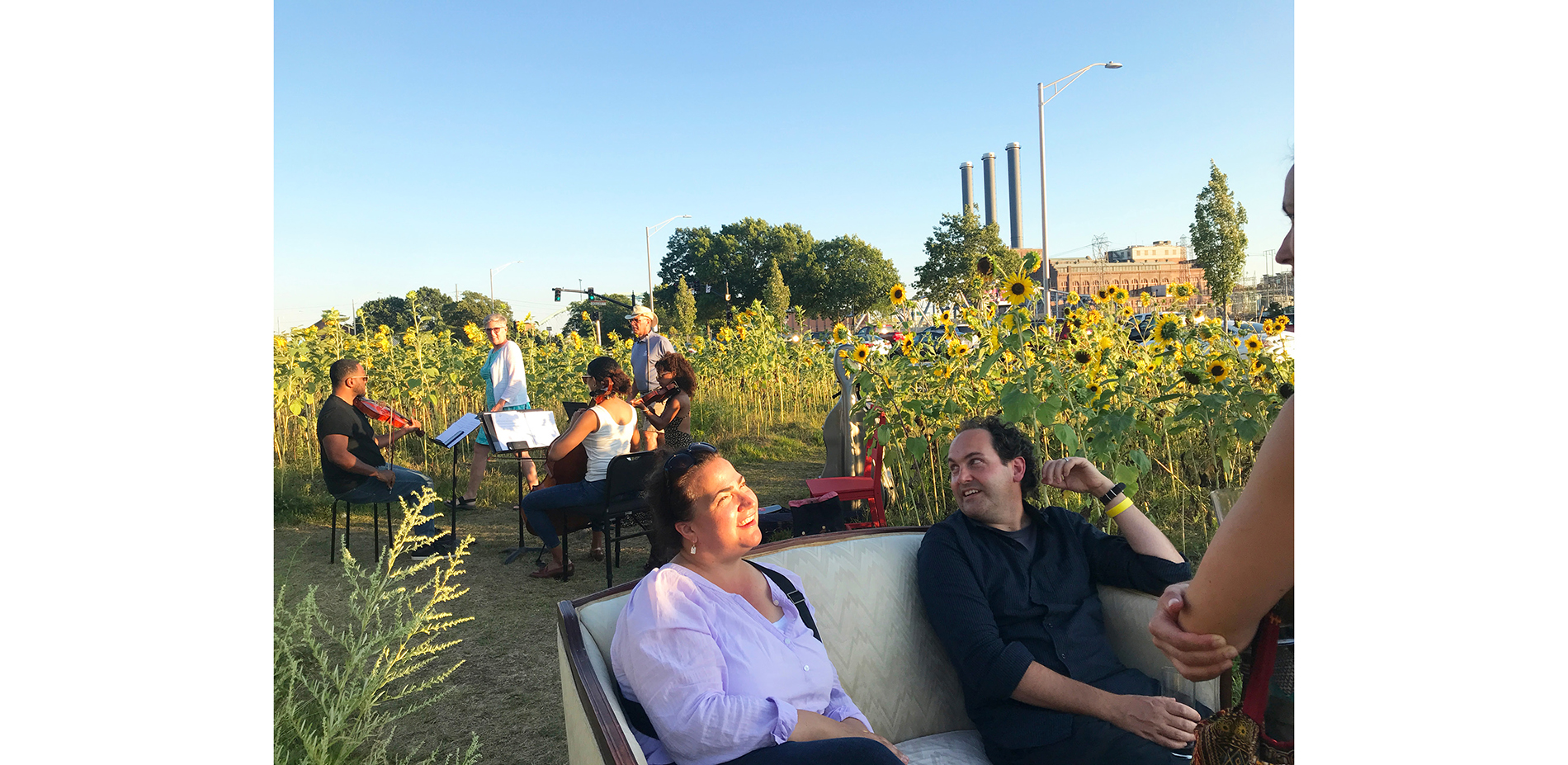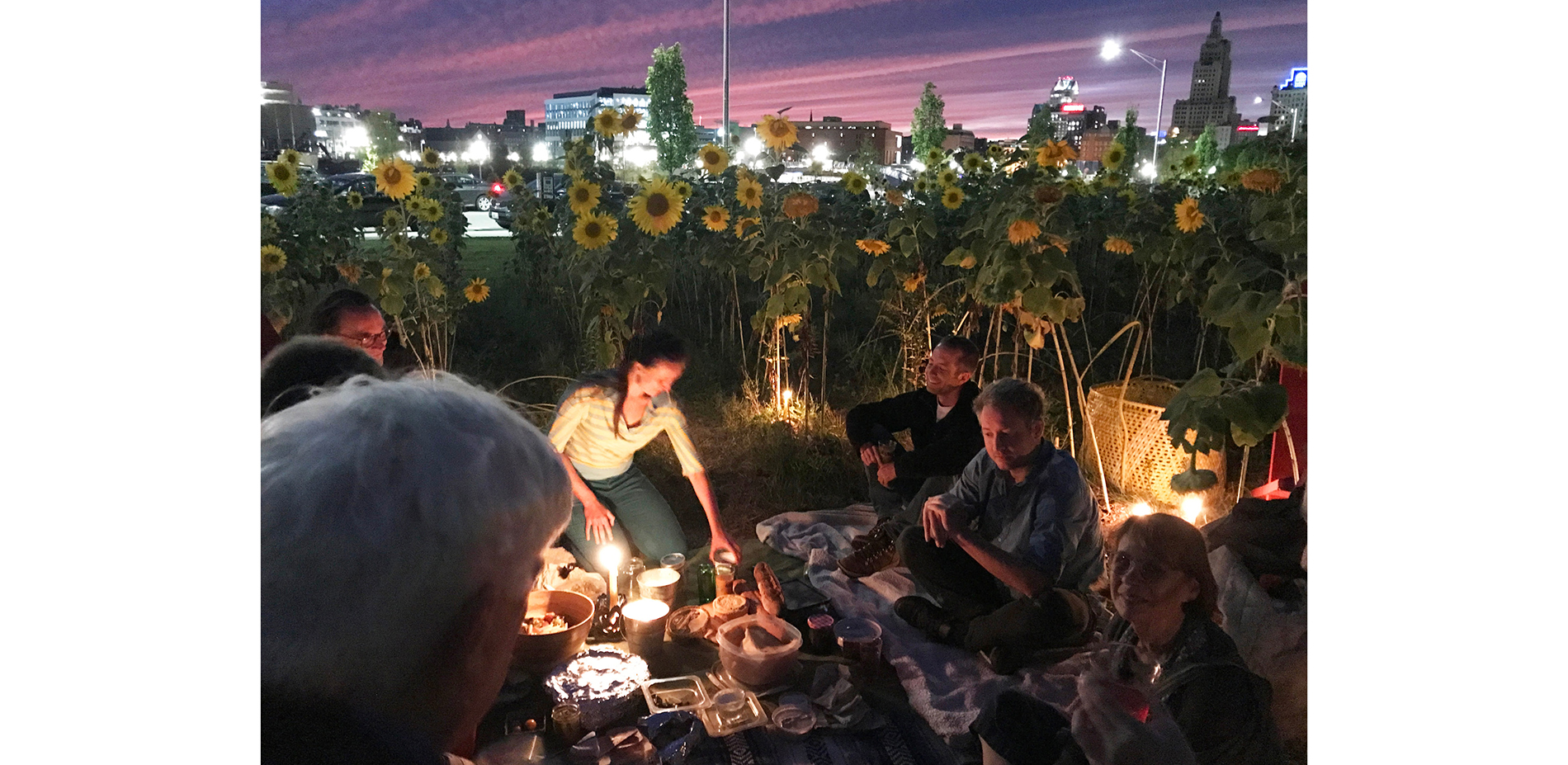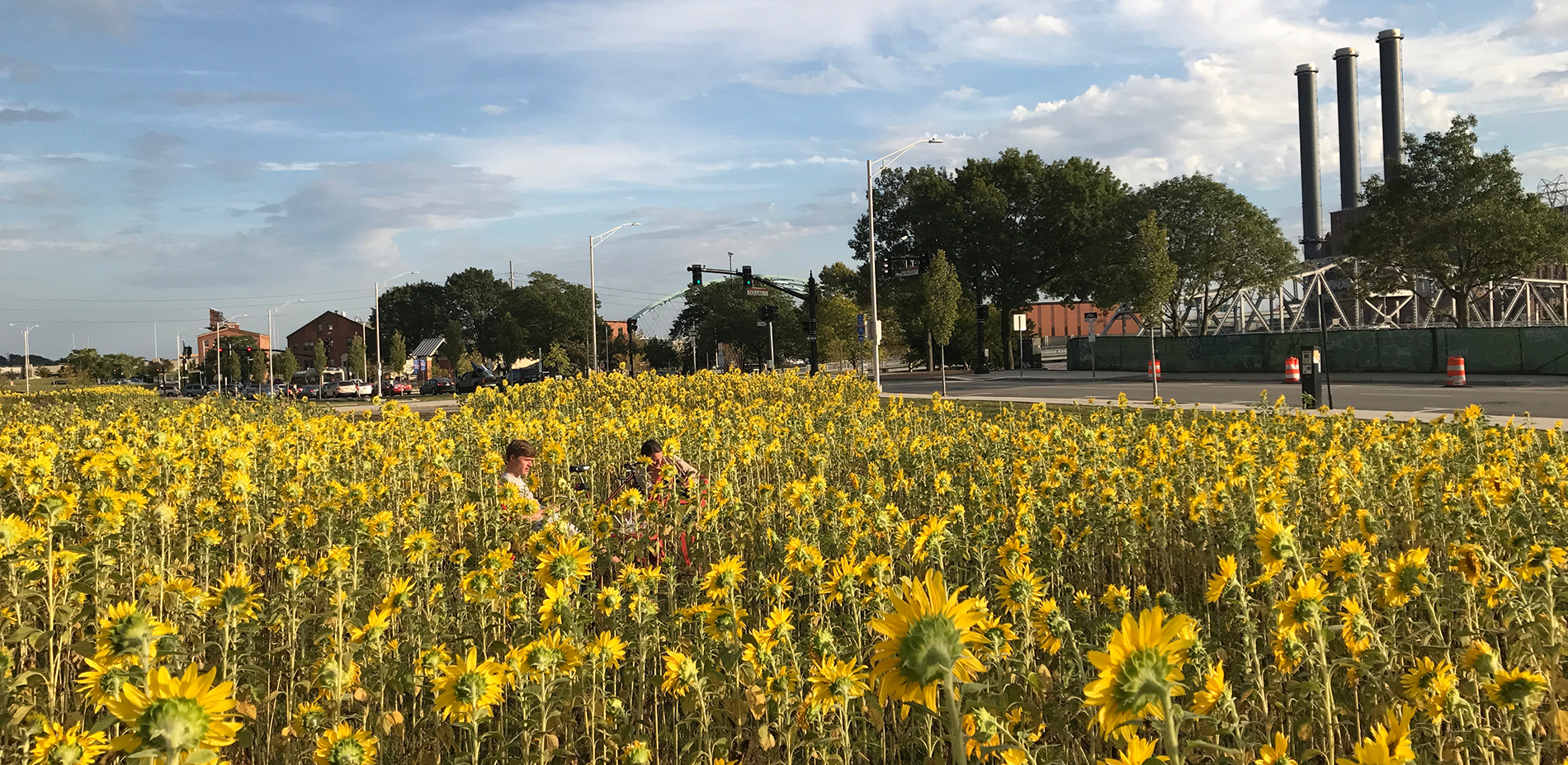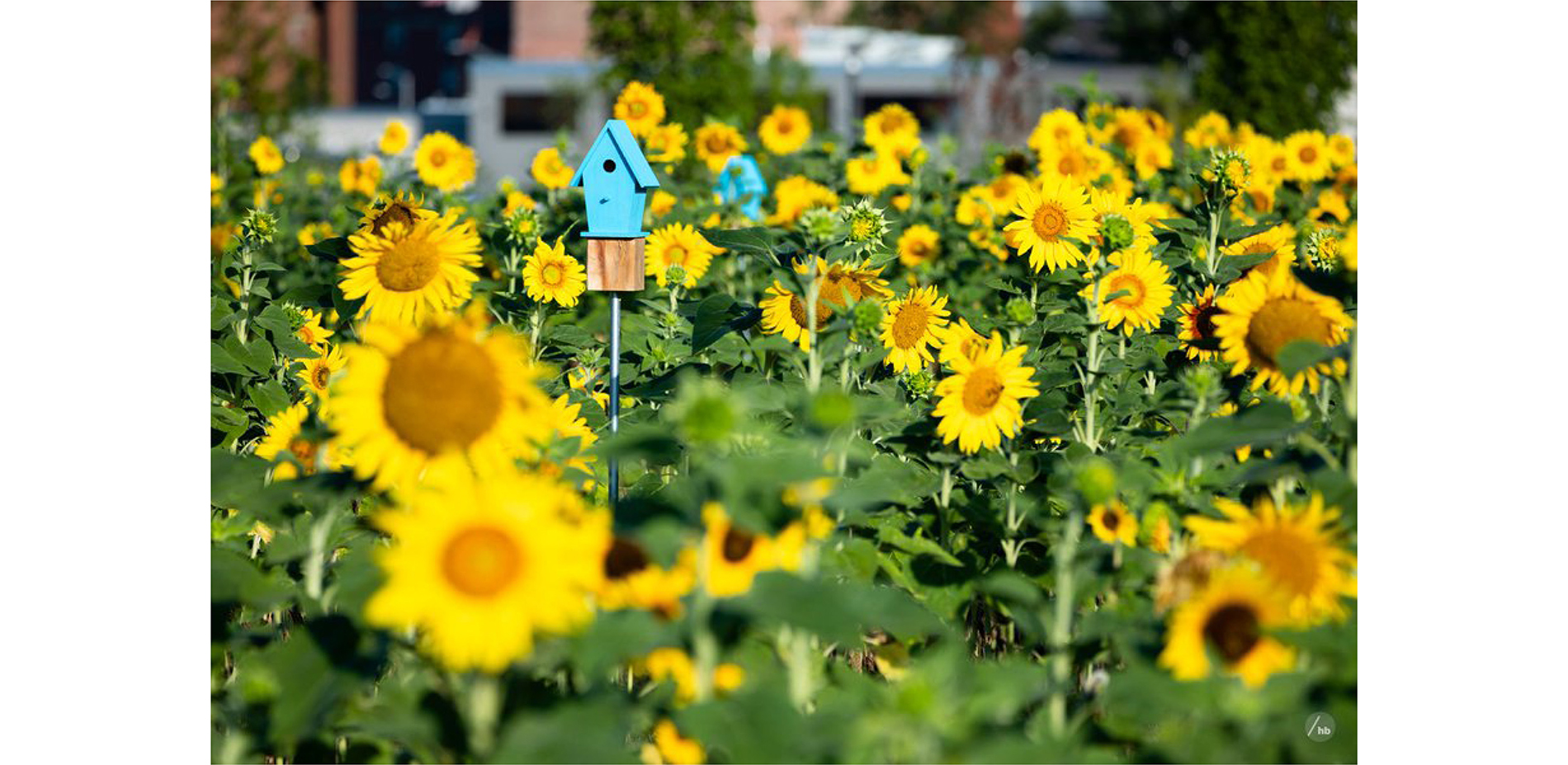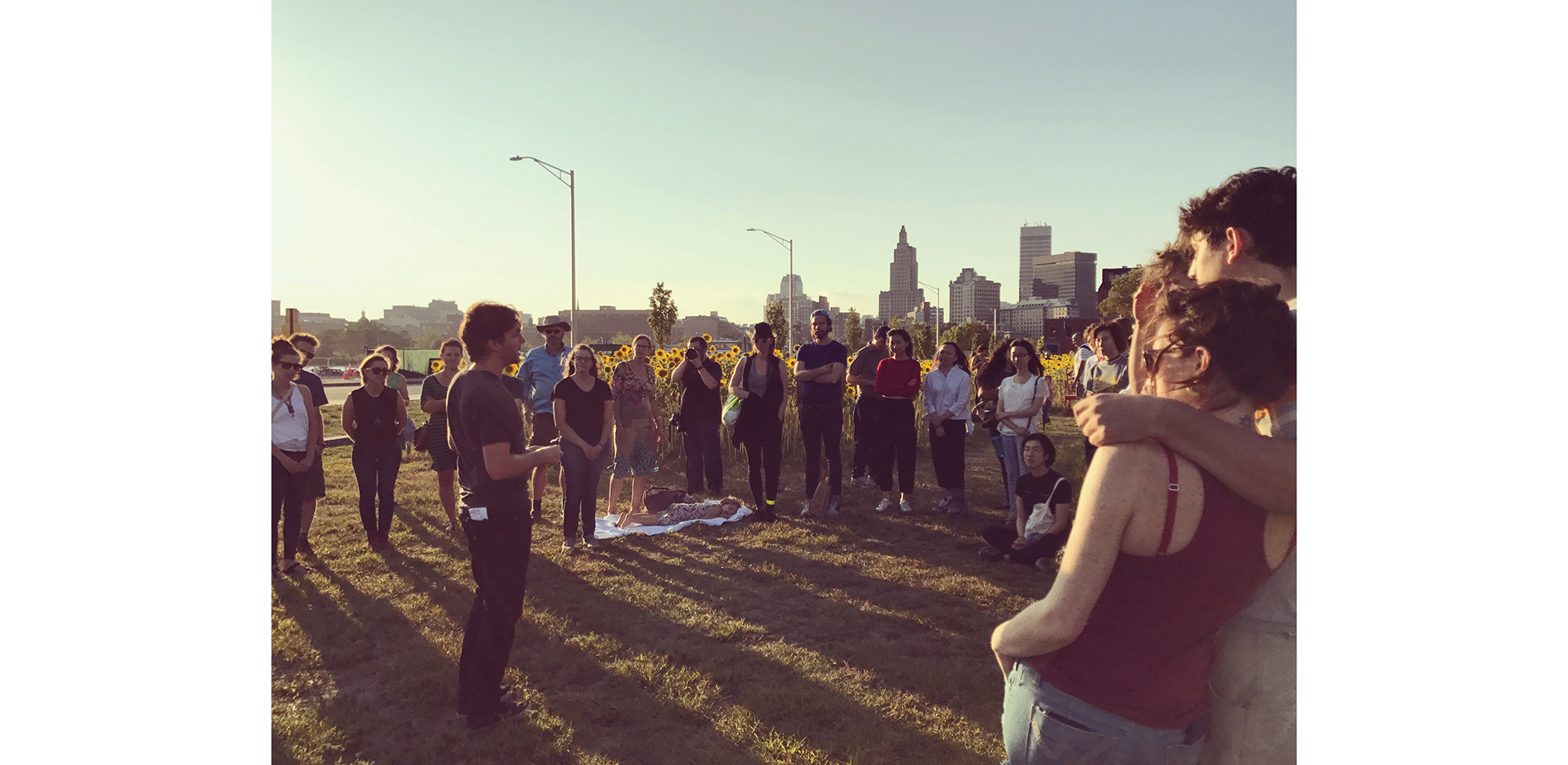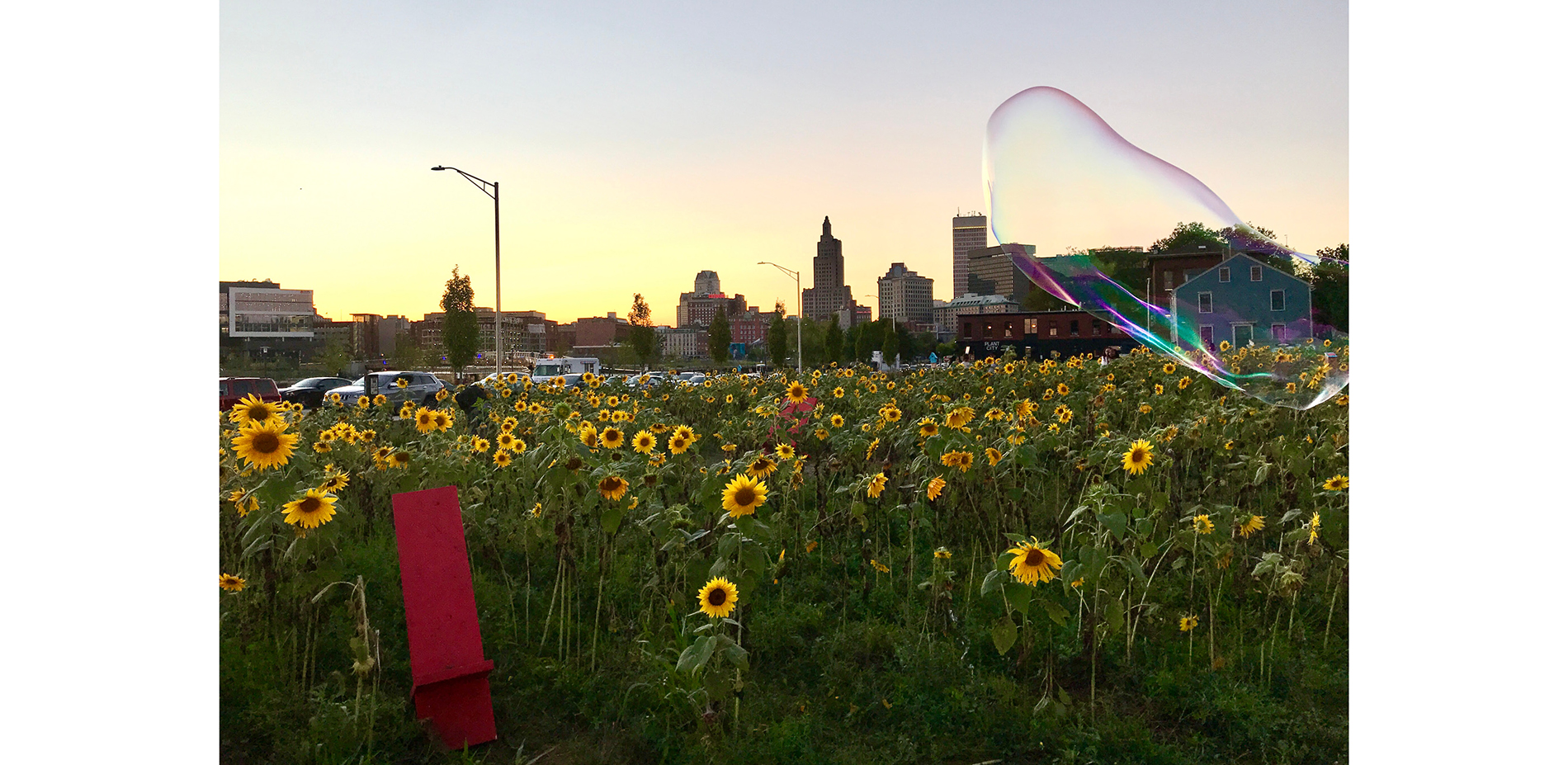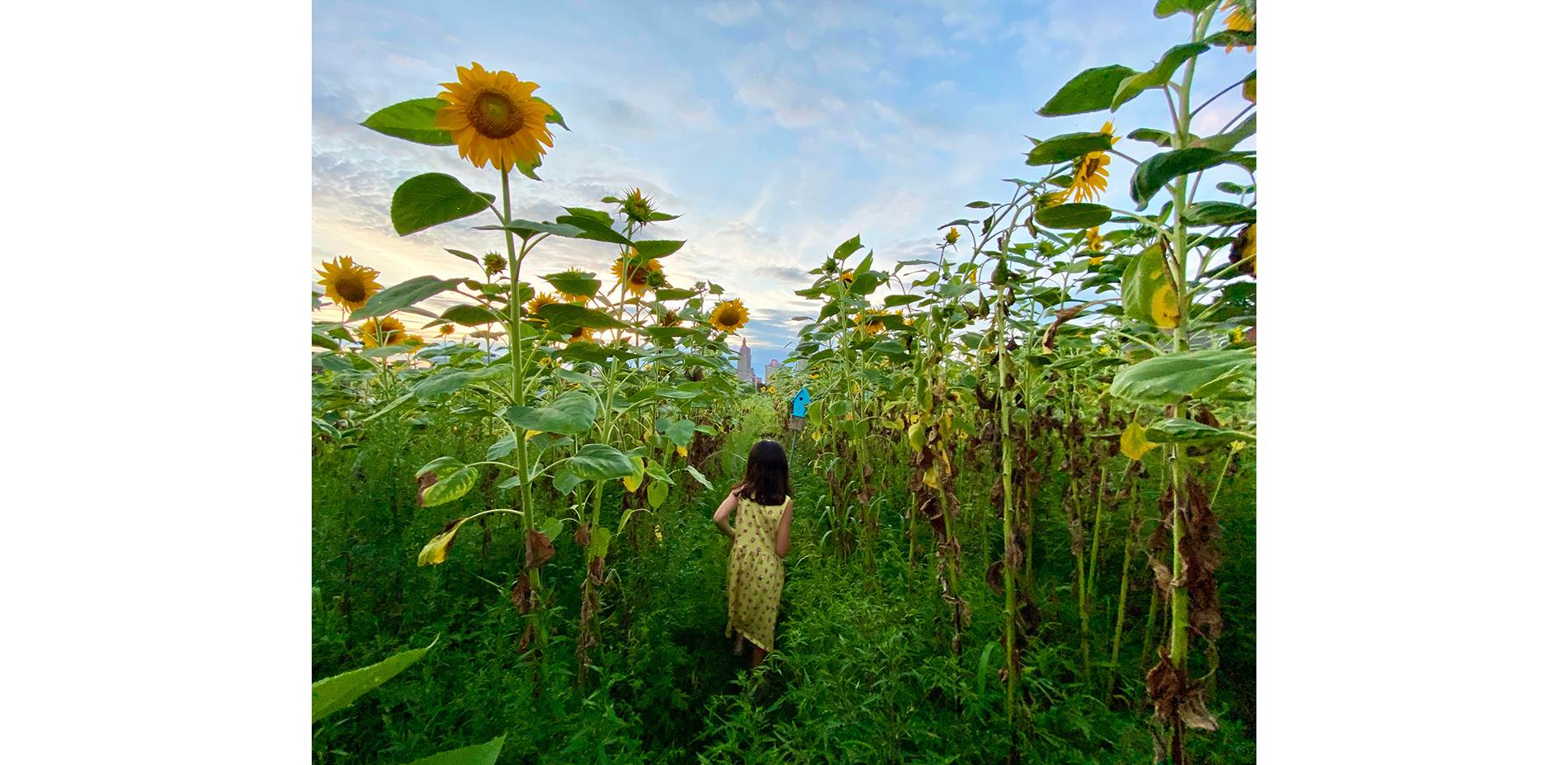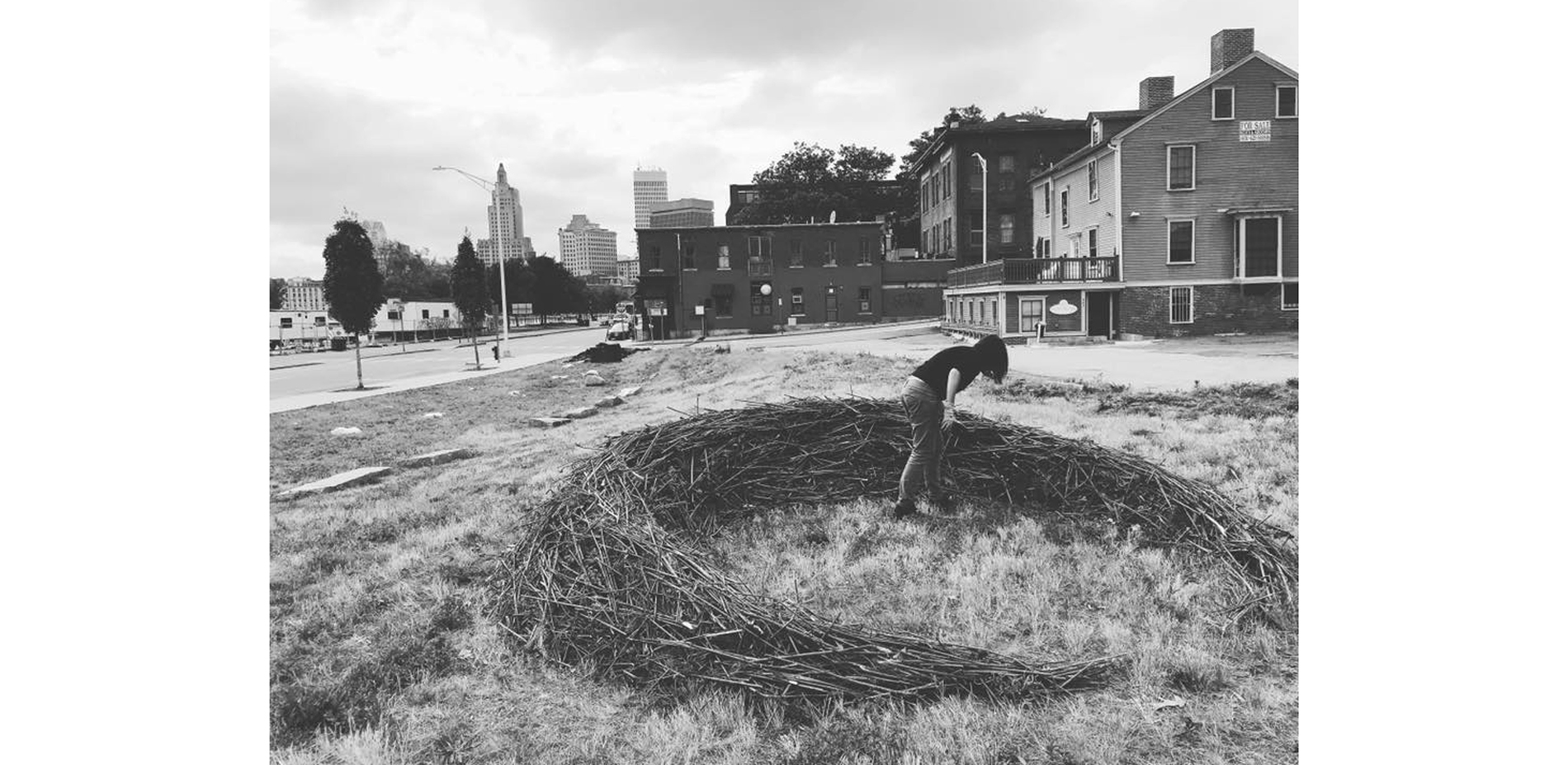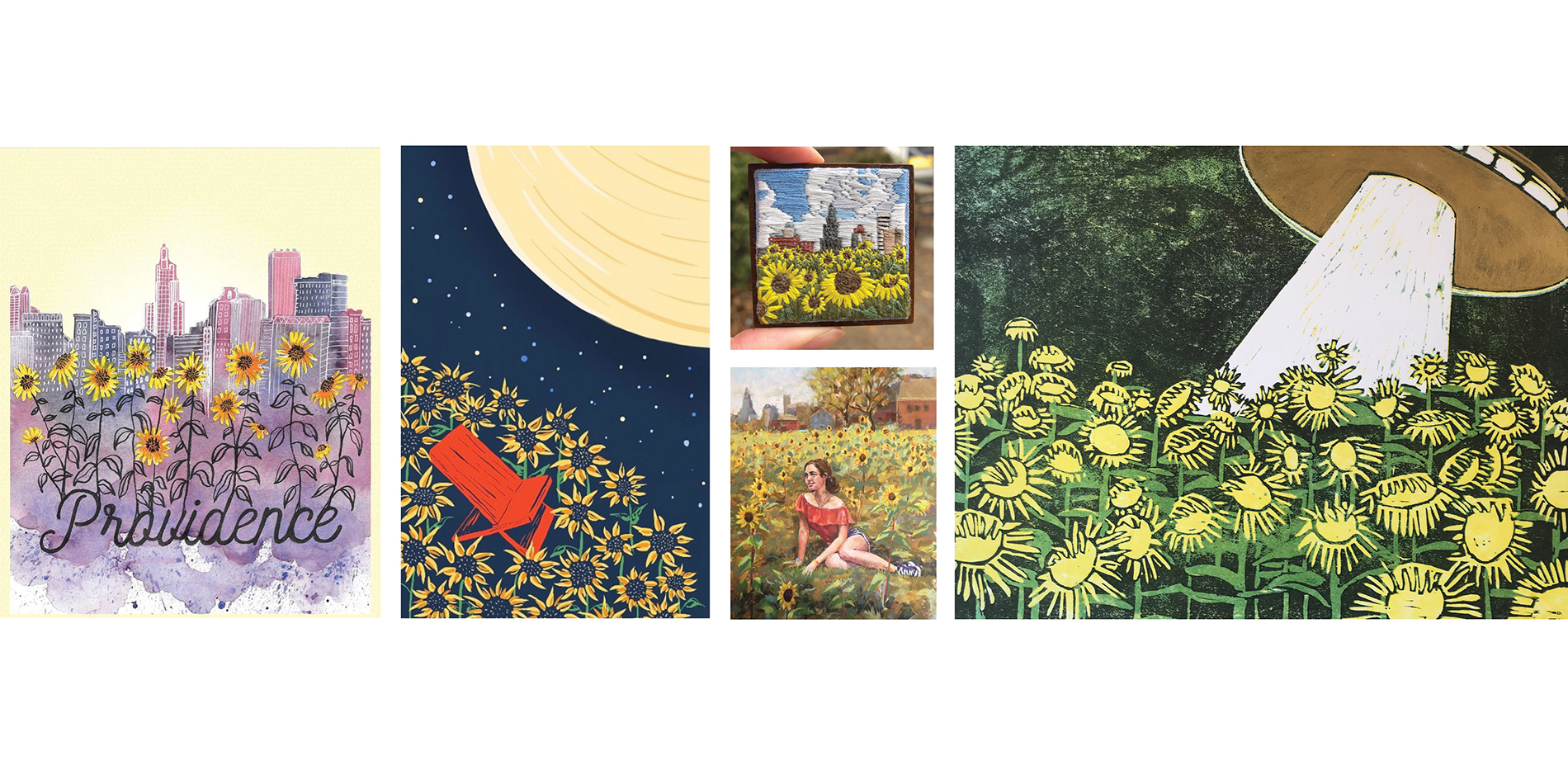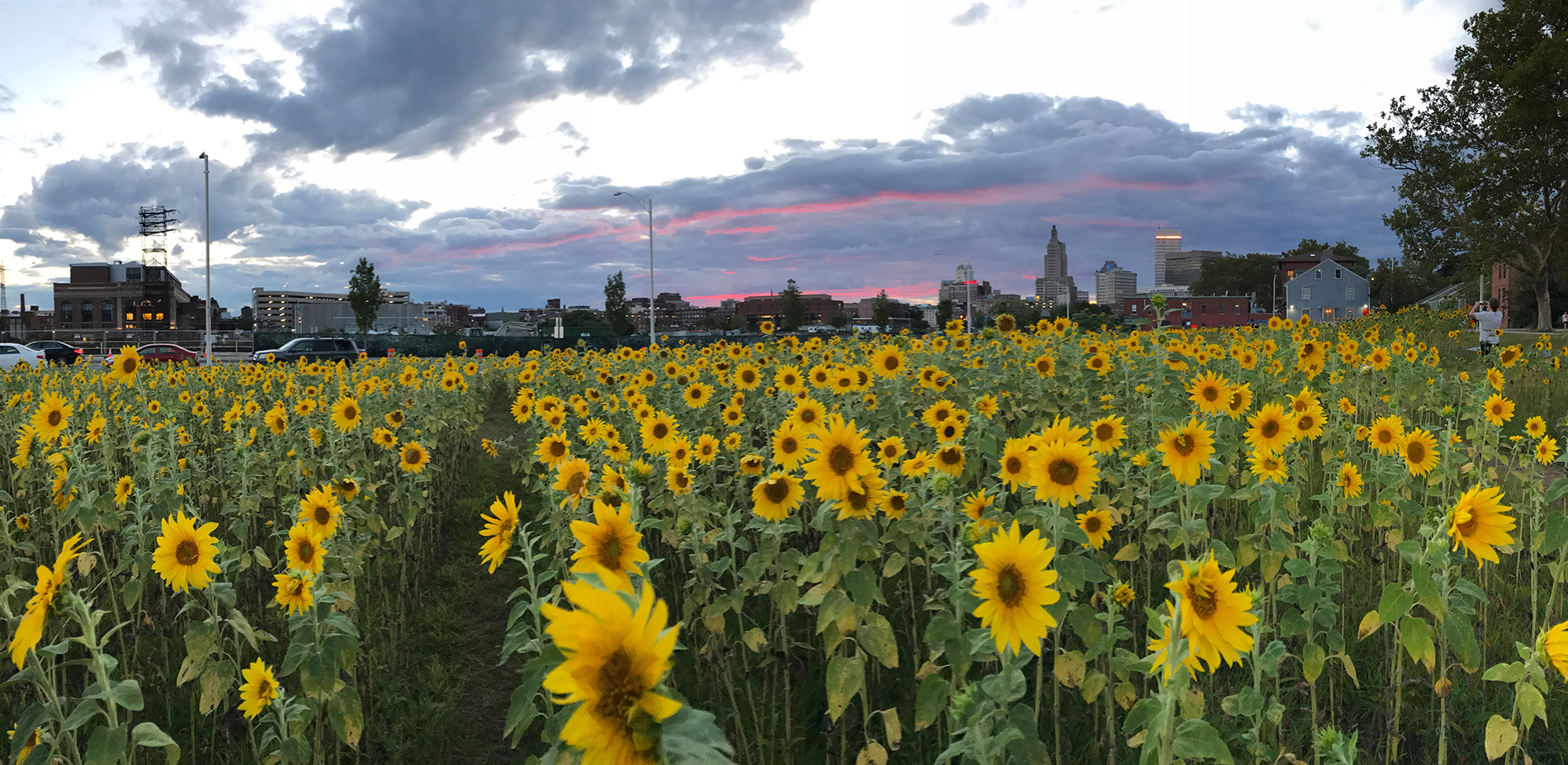10,000 SUNS: Highway to Park Project
Honor Award
General Design
Providence, Rhode Island, United States
DESIGN UNDER SKY
The sunflower was chosen because it’s visually striking, it can grow up to ten feet tall, it’s heliotropic, and it’s an excellent pollinator and food source. It’s also a phytoremediator, capable of sucking toxins out of the ground. The jury lauded the project as a great way to involve the community in the creation of a cherished public space.
- 2022 Awards Jury
Project Credits
I-195 District Commission, Property Owner
Project Statement
10,000 Suns is an annual summer-long botanical performance in which over 10,000 sunflower seeds are planted and nurtured over the summer months on a brownfield site that until recently was occupied by the now removed I-195 Highway which bisected the city of Providence. Using only a few bags of seeds and a diverse community of local volunteers this once vacant land is transformed each Summer into a bio-diverse and artfully activated public space.
Project Narrative
In 2010 the state of Rhode Island and the city of Providence after redirection of the I-195 highway which bisected the city fully opened the new highway location and began development plans for the large “scar” of the former highway location. Many large tracts of land within the city limits were left undeveloped for many years. Being former highway space, these tracts of land were also designated brownfield sites.
After witnessing the unused parcels for six years, in 2016 we submitted an unsolicited proposal to the I-195 Commission, the entity in charge of its development, to create what we called a “botanical performance”. Using the sunflower, we proposed a community built land art piece that would fill an entire vacant city block by planting 10,000 sunflowers with the city’s skyline as a backdrop. The financial and infrastructural commitment was very low with only planting seeds in the ground and a proposed budget of $1,000. The proposal was received enthusiastically by the Commission and the project began its first stages of implementation.
However, there was a subversive intent with the project. We believed that by engaging a diverse range of volunteers with the planting of seeds and continuous maintenance, we could create a “participatory landscape”, fostering a sense of ownership and pride while raising awareness for the importance of landscape as a critical piece of urban infrastructure, as well the expectations for the quality of urban development that would inevitably come to the area.
Each Spring a call goes out inviting and encouraging all walks of life to assist in the sowing of the seeds. No prior experience is needed and simple demonstrations are made to educate about the process. There are a wide variety of tasks that allow for people with a wide range of capacities and abilities to participate. We also plant at different time frames to allow people with different schedules the opportunity to make it to the site. They may come for hours or minutes, and free to come and go as they please.
The sunflower is an incredible plant, and was selected for several reasons. For one its bloom is striking, easily visible from a great distance, and given the right conditions, can grow ten feet tall in only sixty days. It’s heliotropic, meaning it changes position with the path of the sun. It’s a great pollinator and food source, actively attracting bees and birds. And, it is a phytoremediator, having the capability of sucking toxins out of the ground. It was these qualities that we sought to deploy the sunflower onto this vacant (and polluted) land in what we referred to as a “summer long botanical performance.”
Reflecting back on now six seasons of the project The visible transformation of the land has been remarkable. Most noticeable by the hundreds of people it draws during the bloom on a weekend afternoon, visiting to capture a family photo, or simply to experience the magical moment of seeing the setting sun behind the city skyline amongst a sea of sunflowers. Less noticeable is the ecological transformation, as the sunflowers work to clean toxins present in the soil on site, they also bring a variety of bee species by the thousands, ground plovers who have found refuge in the protection of the sunflower stalks, and feeding frenzy for a variety of bird species when the seeds appear. The rows of the sunflowers are also integrated with native meadow seeding, creating a rich biodiverse understory.
Insect and bee hotels with information signage have been added to site as not only a much needed habitat but as didactic experience to better inform visitors about the ecology of the site and urban landscapes in general. A dearth of public seating in the area warranted the addition of custom made red chairs, adding sculptural layer to the site as people move them freely throughout the space
It is clear people from all around the state (and beyond) are attracted to the striking bloom, demonstrated by a Instagram search of #10000suns. However, the project has received many personal notes and letters from people who have expressed the impact this simple field has had on their lives that we could not have anticipated, and certainly did not plan for. For example, a woman visiting with her mother with severe dementia, told of the story of how the sunflowers somehow sparked a moment of clarity in her mother. She stopped, grabbed her daughter’s hand and said: “Sunflowers! You held sunflowers at your wedding!” A touching moment as she told the story with tears in her eyes and was thankful for the project.
Another woman, a victim of a hit and run accident the year before, used the growing sunflower field as her inspirational location for walking rehabilitation.
A man returning to Providence for his father’s funeral, expressed he found great comfort and peace in the field during a difficult time.
These are but a few of many examples of the potential impact the 10,000 Suns can bring to people’s lives, but at a larger scale it has brought the attention of development possibilities, and that landscape is not merely land waiting for a building. Through many interactions with people in the field we believe it has at least cultivated a greater understanding of landscape initiatives and increased the likelihood that landscape architects will share a place at the table when further urban development in Providence is planned.
Products
-
Soils
- Smithfield Peat
Plant List
- Helianthus ‘Mammoth’
- Helianthus ‘Henry Wilde’
- New England Showy Wildflower Meadow Seed Mix
